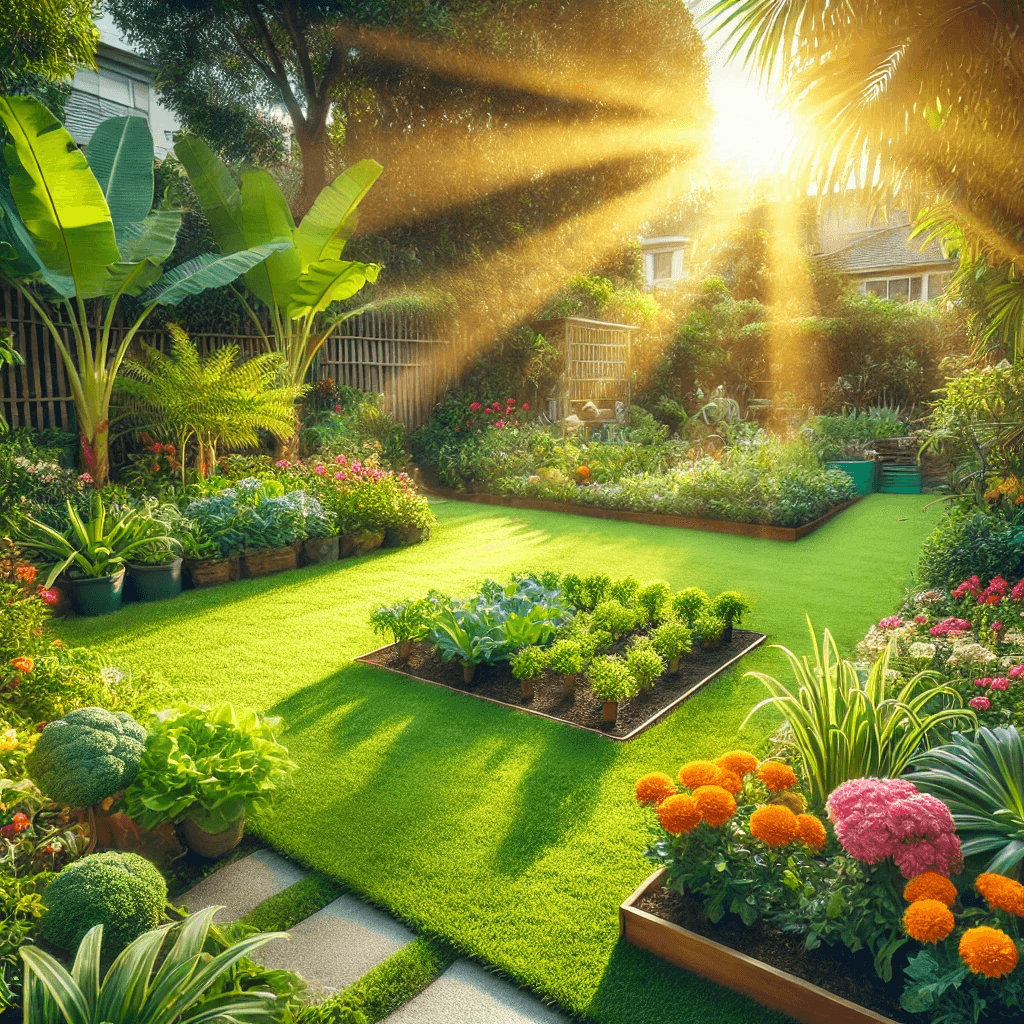Maintaining your lawn and garden doesn’t have to be overwhelming. With a little knowledge and consistent effort, you can enjoy a healthy, beautiful outdoor space. This guide provides simple yet effective tips to help you keep your lawn lush and your garden thriving.
Essential Lawn Maintenance Tips
Your lawn is the foundation of your outdoor space, and proper care will ensure it stays vibrant and healthy.
Mowing Best Practices
Mowing your lawn correctly is essential for maintaining its health and appearance.
- Keep grass at the right height: Avoid cutting grass too short, as this weakens the roots. Aim for a height of 2.5 to 3 inches for most grass types.
- Mow during cooler times: Early morning or late afternoon is ideal to prevent stress on your lawn from the heat.
- Use sharp mower blades: Dull blades tear grass, leaving it prone to disease. Check and sharpen blades regularly.
A consistent mowing routine will keep your lawn neat and encourage strong, healthy growth.
Watering Techniques
Watering is vital for a healthy lawn, but doing it the right way is even more important.
- Water deeply but infrequently: This encourages roots to grow deeper into the soil.
- Water early in the morning: This reduces evaporation and allows the grass to dry during the day, preventing fungal growth.
- Use rain barrels: Collect rainwater to reduce your water bill and make an environmentally friendly choice.
Proper watering will help your lawn stay green and resilient throughout the year.
Fertilizing Your Lawn
Fertilizing provides your lawn with the nutrients it needs to grow thick and strong.
- Apply during the right seasons: Spring and fall are the best times for most grass types.
- Avoid over-fertilizing: Too much fertilizer can burn your grass and harm the soil. Use a balanced fertilizer and follow the recommended application rates.
Regular fertilization ensures your lawn has the nutrients it needs to thrive.
Garden Care Tips for Healthy Plants
A well-maintained garden adds beauty to your outdoor space and supports local wildlife.
Soil Preparation
Healthy soil is the foundation of a successful garden.
- Test the soil pH: Use a testing kit to determine if your soil is too acidic or alkaline. Adjust as needed for your plants.
- Add compost: Enrich your soil with organic matter to improve its structure and fertility.
Good soil preparation helps plants grow stronger and more resistant to pests and diseases.
Planting Strategies
Choosing the right plants and planting them correctly can make all the difference in your garden’s success.
- Choose suitable plants: Select plants that thrive in your region’s climate and soil type.
- Space plants properly: Overcrowding can lead to poor air circulation and increased risk of disease.
- Rotate crops: If you grow vegetables, rotate their placement each season to maintain soil health and prevent pests.
Following these strategies ensures your garden grows abundantly and looks beautiful.
Pruning and Trimming
Regular pruning keeps your plants healthy and encourages growth.
- Remove dead or diseased branches: This prevents the spread of pests and diseases.
- Use clean, sharp tools: Dirty or dull tools can damage plants and introduce infections.
Pruning promotes a tidy, vibrant garden by focusing plants’ energy on healthy growth.
Mulching Benefits
Mulching is a simple way to improve your garden’s health and appearance.
- Retain soil moisture: Mulch reduces evaporation, keeping plants hydrated longer.
- Suppress weeds: A layer of mulch blocks sunlight, preventing weeds from growing.
- Regulate soil temperature: Mulch keeps the soil cooler in summer and warmer in winter.
Adding mulch is an easy and effective step to support your plants year-round.
Preventing Common Lawn and Garden Problems
Taking preventative measures can save you time and trouble in the long run.
Pest Control
Pests can quickly damage your lawn and garden if not managed properly.
- Use natural remedies: Neem oil and companion planting (like marigolds to repel aphids) are effective eco-friendly options.
- Identify pests early: Regularly inspect plants for signs of infestation, such as chewed leaves or discoloration.
Early detection and natural solutions help minimize damage and protect the environment.
Weed Management
Weeds compete with your plants for nutrients, water, and sunlight.
- Pull weeds by hand: This is effective for small infestations and prevents weed seeds from spreading.
- Use targeted herbicides: Choose products that target specific weeds without harming your grass or plants.
- Maintain lawn health: A healthy lawn naturally crowds out weeds by leaving no room for them to grow.
Regular weed control keeps your lawn and garden looking neat and thriving.
Disease Prevention
Diseases can harm your plants and lawn, but proper care reduces the risk.
- Avoid overwatering: Excess water creates conditions for fungal growth.
- Rotate plants: In gardens, rotating crops minimizes the buildup of diseases in the soil.
- Maintain hygiene: Remove fallen leaves and debris where fungi and bacteria can thrive.
Simple practices can significantly lower the risk of plant diseases in your garden.
Easy Ways to Save Time and Effort
Efficient practices make lawn and garden maintenance less time-consuming.
Use the Right Tools
Investing in the right tools can save you time and energy.
- Choose ergonomic tools: Tools designed for comfort and efficiency reduce strain.
- Maintain tools regularly: Keep blades sharp and handles secure to ensure they work well when you need them.
Having the right tools on hand makes every gardening task easier.
Automate Watering
Automated systems reduce the effort required to keep your lawn and garden hydrated.
- Install a drip irrigation system: This waters plants directly at their roots, minimizing waste.
- Use timers: Timers ensure consistent watering and free up your schedule.
Automation takes the guesswork out of watering and saves you valuable time.
Conclusion
Maintaining your lawn and garden doesn’t have to be complicated. By following these tips, you can keep your outdoor space looking great with less effort. Start with the basics like proper mowing, watering, and soil preparation, and gradually incorporate more advanced practices like pest control and automation. With consistency and care, your lawn and garden will flourish, providing you with a beautiful space to enjoy year-round.




